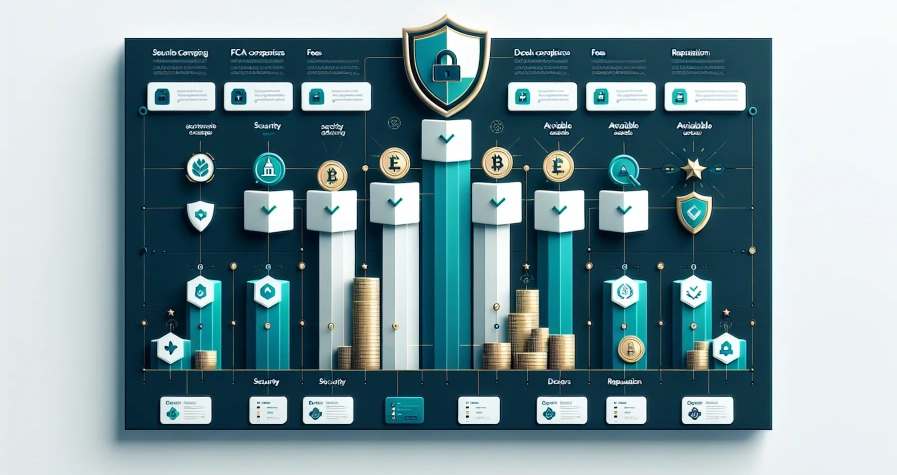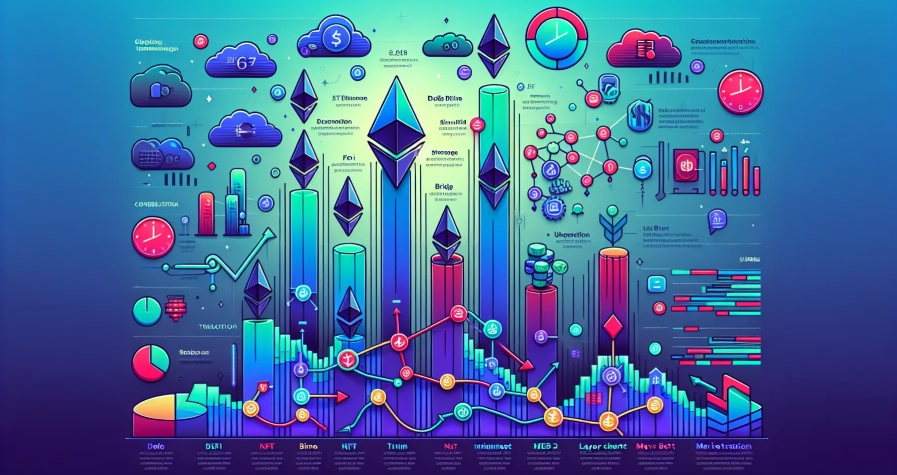Spot trading and margin trading represent two fundamental approaches to cryptocurrency and financial markets that every trader should understand. Whether you’re just starting your trading journey or looking to expand your strategies these two methods offer distinctly different risk profiles and profit potentials.
Spot trading involves purchasing assets with your own funds and holding them until you decide to sell. It’s straightforward and limits your losses to your initial investment. Margin trading on the other hand allows you to borrow funds to amplify your buying power potentially increasing both profits and losses significantly.
Understanding the key differences between these trading styles isn’t just about choosing the right approach for your goals. It’s about managing risk protecting your capital and making informed decisions that align with your experience level and financial situation. Let’s explore how these two trading methods work and which might suit your investment strategy.
What Is Spot Trading?
Spot trading represents the most straightforward method of buying and selling financial assets in cryptocurrency and traditional markets. You purchase assets directly using your available funds and take immediate ownership of the purchased securities.
Key Characteristics of Spot Trading
Spot trading operates on immediate settlement principles where transactions complete within 1-2 business days for traditional markets and instantly for cryptocurrency exchanges. You pay the full purchase price upfront using your own capital without borrowing additional funds from brokers or exchanges.
Ownership Structure:
- Complete asset ownership upon transaction completion
- Direct control over purchased securities
- Full rights to dividends, interest payments, and voting rights
- Immediate access to transfer or withdraw assets
Settlement Process:
- T+2 settlement for stock markets (trade date plus 2 business days)
- Instant settlement for cryptocurrency spot markets
- Real-time balance updates in your trading account
- Immediate availability for further trading or withdrawal
Advantages of Spot Trading
Spot trading offers several compelling benefits that make it attractive for conservative investors and beginners. Your risk exposure remains limited to the amount you initially invest.
Risk Management Benefits:
- Maximum loss equals your initial investment amount
- No liquidation risks or margin calls
- Protection from leverage-related market volatility
- Simple position management without complex calculations
Simplicity Factors:
- Straightforward buy-and-hold strategies
- Clear profit and loss calculations
- No interest charges on borrowed funds
- Minimal platform fees compared to margin trading
Long-term Investment Suitability:
- Ideal for dollar-cost averaging strategies
- Perfect for holding assets through market cycles
- No time pressure from borrowing costs
- Complete freedom to hold positions indefinitely
Disadvantages of Spot Trading
Spot trading limitations become apparent when you consider profit potential and capital efficiency. Your returns directly correlate with your available investment capital.
Capital Requirements:
- Higher initial capital needed for significant positions
- Limited purchasing power based on account balance
- Slower portfolio growth compared to leveraged trading
- Opportunity costs during extended holding periods
Profit Limitations:
- Returns capped at 100% maximum for any single investment
- Inability to profit from declining asset prices
- Reduced flexibility in volatile market conditions
- Lower potential returns compared to margin trading strategies
- Requires precise entry points for optimal returns
- Limited ability to capitalise on short-term price movements
- Reduced trading frequency due to capital constraints
- Dependency on overall market direction for profitability
What Is Margin Trading?
Margin trading is a method where you borrow funds to increase your buying power and open larger positions than your own capital permits. It involves using leverage to amplify both potential profits and losses.
How Margin Trading Works
You begin by opening a margin account with your chosen broker or exchange. You’ll post collateral such as securities or cryptocurrency assets to secure the borrowed funds.
The trading process allows you to take both long and short positions:
- Long positions – betting that asset prices will rise
- Short positions – betting that asset prices will fall
Interest charges apply to the borrowed funds throughout your trading period. These costs increase your overall trading expenses and reduce net profits.
Your broker or exchange monitors your positions continuously. They’ll issue margin calls if your account value drops below required maintenance levels.
Leverage and Risk in Margin Trading
Leverage multiplies your exposure to market movements. For example, 2x leverage doubles both your potential profits and losses on any trade.
Higher leverage ratios create exponentially greater risks:
| Leverage Ratio | Profit/Loss Multiplier | Risk Level |
|---|---|---|
| 2x | 2 times | Moderate |
| 5x | 5 times | High |
| 10x | 10 times | Very High |
Markets moving against your leveraged position can trigger forced liquidation. This occurs when your losses approach the value of your collateral.
Advantages of Margin Trading
You can maximise returns with smaller amounts of invested capital. This efficiency allows you to diversify across multiple positions simultaneously.
Profit opportunities exist in both rising and falling markets through long and short strategies. You’re not limited to buying and holding assets like traditional investing.
Enhanced trading strategies become possible beyond simple spot purchases. You can hedge existing positions or execute complex arbitrage opportunities.
Disadvantages of Margin Trading
Significant losses can exceed your initial investment amount. The borrowed funds amplify negative market movements just as they amplify positive ones.
Interest costs on borrowed funds reduce your net profits or add to existing losses. These charges accumulate daily regardless of your trading performance.
Careful risk management and trading experience are essential to avoid liquidation scenarios. Inexperienced traders often face margin calls during volatile market conditions.
Key Differences Between Spot Trading and Margin Trading
Understanding the fundamental distinctions between these two trading approaches helps you make informed decisions about which method aligns with your investment strategy and risk tolerance.
Risk Level Comparison
Spot trading presents significantly lower risk exposure since your losses remain capped at your initial investment amount. You face no interest charges or forced liquidations when market conditions shift unfavourably.
Margin trading carries substantially higher risk levels due to leverage amplification effects. Small price movements can trigger large losses that potentially exceed your original capital investment. Margin calls may force you to deposit additional funds or face position liquidation when trades move against your expectations.
Your risk profile differs dramatically between these methods – spot trading protects you from catastrophic losses whilst margin trading exposes you to amplified downside risks.
Capital Requirements
Spot trading demands full upfront payment for asset purchases, requiring you to commit 100% of the position value as capital. This straightforward approach reflects complete ownership without borrowing obligations.
Margin trading requires only a fraction of the position’s total value as initial margin, typically ranging from 10% to 50% depending on the asset and broker requirements. You borrow the remaining funds to establish larger positions than your available capital permits.
| Trading Method | Capital Requirement | Borrowing Involved | Ownership |
|---|---|---|---|
| Spot Trading | 100% of position value | No | Complete |
| Margin Trading | 10-50% of position value | Yes | Leveraged |
Potential Returns and Losses
Spot trading generates returns proportional to asset price movements – your profits materialise only when prices appreciate above your purchase price. Your maximum loss equals your total investment amount, providing natural downside protection.
Margin trading amplifies both profit potential and loss exposure through leverage multiplication. You can profit from rising prices through long positions or falling prices via short positions. However, leveraged losses can exceed your invested capital if market movements prove unfavourable to your positions.
Your profit calculations differ substantially: spot trading profits equal price appreciation multiplied by your holdings, whilst margin trading profits reflect price changes multiplied by your leveraged position size.
Which Trading Method Should You Choose?
Your choice between spot and margin trading depends on your risk tolerance, experience level, and financial objectives. Consider your capital availability and market conditions when determining the most suitable approach for your investment strategy.
Factors to Consider
Risk tolerance determines your trading method selection, as margin trading carries substantially higher financial risk due to leverage amplification. Spot trading limits your losses to the initial investment amount, whilst margin trading can result in losses exceeding your original capital.
Experience level influences your trading success rates across both methods. Spot trading suits beginners learning market behaviour without complex risk management requirements, whilst margin trading demands advanced knowledge of volatility patterns, leverage calculations, and disciplined risk control strategies.
Market conditions affect profitability across different trading approaches. Margin trading can generate profits during volatile or falling markets through short positions, but becomes particularly risky during sudden price swings caused by news events or market rumours.
Capital availability shapes your position sizing capabilities between methods. Spot trading requires full capital upfront for asset purchases, limiting your market exposure to available funds, whilst margin trading allows larger position sizes with fractional capital requirements through borrowed funds.
Beginner vs Advanced Trader Considerations
Beginners benefit from spot trading’s straightforward approach to market participation. Start with spot trading to understand price movements, market cycles, and asset behaviour without leverage complications or forced liquidation risks.
Advanced traders can leverage margin trading for enhanced returns when possessing sufficient market knowledge. Your experience with volatility analysis, risk management protocols, and leverage calculations enables more sophisticated trading strategies, but requires avoiding overtrading and speculation-based decisions.
Risk management skills separate successful margin traders from unsuccessful ones. Advanced traders implement stop-loss orders, position sizing rules, and portfolio diversification strategies to control leverage risks, whilst beginners often lack these essential risk control frameworks.
Capital preservation remains crucial regardless of experience level. Choose spot trading for simplicity and capital safety, or select margin trading if your goal involves higher profits and you can handle elevated risks through disciplined strategy implementation.
Risk Management Strategies
Risk management strategies differ significantly between spot and margin trading, reflecting the distinct risk profiles of each approach. Understanding these specific strategies helps you implement appropriate controls for your chosen trading method.
Spot Trading Risk Management
Spot trading risk management centres on protecting your available capital whilst maintaining disciplined position sizing. Use only funds you own to avoid debt obligations or leverage complications that can amplify losses.
Set stop-loss orders to establish automatic sell triggers when prices fall to predetermined levels. Position sizing strategies limit your exposure by investing only 2-5% of your total capital per trade, reducing the impact of individual losses on your overall portfolio.
Diversification across multiple assets mitigates volatility risk by spreading investments through different cryptocurrencies or financial instruments. Stay informed about market news, economic indicators and geopolitical events to adjust your trading strategies based on current conditions.
Avoid emotional trading decisions by maintaining a structured trading plan throughout market fluctuations. This disciplined approach prevents impulsive actions that often lead to poor timing and unnecessary losses.
Margin Trading Risk Management
Margin trading requires more sophisticated risk controls due to the amplified exposure from borrowed funds. Understanding leverage ratios becomes crucial since you’re borrowing capital that increases both profit potential and loss magnitude.
Implement stop-loss and take-profit orders immediately when opening leveraged positions, as price movements affect margin trades more dramatically than spot positions. Monitor margin requirements continuously to maintain sufficient collateral and avoid forced liquidation scenarios.
Assess your risk tolerance carefully before engaging in margin trading, as losses can exceed your initial investment through leverage multiplication. Set maximum leverage levels between 2:1 and 5:1 for beginners, with experienced traders potentially using higher ratios based on market conditions.
Educate yourself thoroughly on margin mechanics, including interest rates on borrowed funds and margin call procedures. Use risk limits by establishing position size caps and overall portfolio exposure thresholds to control potential losses across all leveraged positions.
Conclusion
Your success in trading ultimately depends on selecting the approach that aligns with your financial situation and risk appetite. Both spot and margin trading offer distinct pathways to market participation with their own unique advantages and challenges.
Remember that there’s no universally “correct” choice between these methods. What matters most is that you’ve thoroughly assessed your experience level capital availability and long-term objectives before making your decision.
Whether you choose the straightforward nature of spot trading or the amplified potential of margin trading ensure you’re committed to continuous learning and disciplined execution. The markets reward those who approach them with knowledge preparation and respect for risk management principles.
Frequently Asked Questions
What is the main difference between spot trading and margin trading?
Spot trading involves buying assets with your own funds and taking immediate ownership, limiting losses to your initial investment. Margin trading allows you to borrow funds to open larger positions than your capital permits, using leverage to amplify both potential profits and losses. Spot trading is simpler and lower risk, while margin trading offers higher profit potential but carries significantly more risk.
Is spot trading suitable for beginners?
Yes, spot trading is ideal for beginners due to its simplicity and lower risk profile. You can only lose what you initially invest, there are no interest charges on borrowed funds, and you won’t face forced liquidations. This makes it perfect for learning market dynamics whilst building trading experience without the complexities of leverage and margin requirements.
What are the main risks of margin trading?
The primary risks include losing more than your initial investment due to leverage, accumulating interest costs on borrowed funds, and facing margin calls that may force position closures at unfavourable prices. Small market movements can result in substantial losses, and inexperienced traders may struggle with the complex risk management required for successful margin trading.
How much capital do I need for spot trading versus margin trading?
Spot trading requires the full purchase price of assets upfront, making it more capital-intensive for large positions. Margin trading only requires a fraction of the position’s value as initial margin (typically 10-50%), allowing you to control larger positions with less capital. However, this lower capital requirement comes with significantly higher risk exposure.
Can I lose more money than I invest in spot trading?
No, with spot trading your losses are capped at your initial investment. Since you’re using only your own funds without borrowing, the maximum you can lose is 100% of what you originally invested. This makes spot trading a safer option for risk-averse investors and those learning to trade financial markets.
What leverage ratios are available in margin trading?
Leverage ratios typically range from 2:1 to 100:1 or higher, depending on the broker and asset class. For example, 10:1 leverage means you can control £10,000 worth of assets with just £1,000 of your own capital. Higher leverage amplifies both profits and losses proportionally, requiring more sophisticated risk management strategies to avoid significant losses.
Do I earn dividends and voting rights with both trading methods?
With spot trading, you have complete ownership of assets, entitling you to all dividends, interest payments, and voting rights. In margin trading, you may still receive these benefits depending on your broker’s policies, but the borrowed nature of some positions might affect your entitlements. Always check your broker’s specific terms regarding ownership rights in leveraged positions.
Which trading method is better for long-term investing?
Spot trading is generally better suited for long-term investing strategies. You avoid ongoing interest costs associated with borrowed funds, benefit from compound returns over time, and don’t face the pressure of margin calls during temporary market downturns. The buy-and-hold approach works naturally with spot trading, making it ideal for building wealth over extended periods.









